Theory: Intermediate
Lesson Overview:
• Analyze the harmony to five versions of Hank Williams’ “I’m So Lonesome I Could Cry.”
• Learn how to put your own stamp on a popular song.
• Understand how to create new variations of a simple chord structure. Click here to download a printable PDF of this lesson's notation.
“I’m gonna sing a song that’s probably the saddest song I ever heard,” said Elvis Presley on his Aloha from Hawaiispecial, and with that, the band kicked into Hank Williams’ “I’m So Lonesome I Could Cry.” If it’s the saddest song Elvis ever heard, he might have even made it sadder with his rendition, which was slower and more dramatic than the original.
“I’m So Lonesome I Could Cry” is a classic piece of the American songbook. It was first released by Williams in 1949 as the B-side of “My Bucket’s Got a Hole in It,” and since then it has been covered by countless artists across genres, including country singer BJ Thomas, rock ’n’ rollers Roy Orbison and Jerry Lee Lewis, soul singer Al Green, jazz guitarists Bill Frisell and John Scofield, and even famed NFL quarterback Terry Bradshaw.
A big part of what makes the song so interesting to cover are its masterfully written lyrics that manage to capture a universal part of the human condition. But just as potent as the lyrics is its simple, timeless melody, which has allowed the song to work so effectively in a variety of genres, and its sparse chord progression, which leaves plenty of room for artists to put their own stamp on the song.
For this lesson, we’ll be looking at a few chord progressions that different musicians have used in their interpretations of “I’m So Lonesome I Could Cry.” This isn’t just a lesson in how to play the song, but more importantly, a guide to reworking a simple set of chords to create fresh harmony.
First, let’s take a listen to the original.
Hank Williams sings the song in E major, but for ease of comparison between examples, I’ve put most of the versions here in G major, where it fits really nicely on the guitar. Ex. 1shows the chord progression used by Williams in the key of G. It’s a 16-measure I–IV–V progression in 3/4 that basically looks like a 12-bar blues, but with an extra four measures up front and an extra I chord in the first measure of the final line.
The chord progression most often used in cover versions, with some slight alterations, is shown in Ex. 2. The most significant thing about this set of chords is the way the first two lines feature movement in the I chord from G to Gmaj7 to G6 and back, which can be done in the bass—as in BJ Thomas’ version—or, more commonly, in the middle or top of the chord voicing.
The chords here are taken directly from the version recorded by Elvis Presley shown below. In the third line, the IV chord (C) is followed by a IVm chord (Cm), which then returns to the I chord (G), followed by a VIm (Em). This line thematically follows the chords from the first half of the progression by continuing to change on the downbeat of each measure.
Leon Russell recorded a version that uses this chord progression except for the third line. In this case, seen in Ex. 3, rather than descend from E to Eb to make the C to Cm (IV to IVm) change, as in Elvis’ version, Russell ascends from the root, following the IV with a #IVdim7 (C#dim7). He then puts the 5 in the bass of the I (G/D) and finishes the line with the IVm7 (Em7).
Many versions of “I’m So Lonesome I Could Cry” feature key changes, including later on in Russell’s version, as well as recordings by Jerry Lee Lewis and Roy Orbison. Glen Campbell’s take on the song, seen in Ex. 4, involves two key changes, and he uses a slightly different set of chords in each of the respective keys. In the first 16 measures, shown here in the key of F major, Campbell uses the chord changes on the I chord from Ex. 2 with the maj7 and 6 chord reversed. After two passes through this progression, he ends with a C#7, which is the V chord for the following key, F# major.
In the F# major progression, Campbell follows the IV chord (B) with a bVII (E), which then moves up a tritone to go to the IIIm (A#m7, written here enharmonically as Bbm7) before moving to the VIm (D#m7, or enharmonically Ebm7). Once in the key of G, Campbell sticks to the same set of chords until the ending, where he follows the I–V in the first two measures by modulating keys up one half-step for a V–I in Ab,before resolving and ending the song with a G major.
While most artists favor the waltz-feel of the original version, others, such as Little Richard and Al Green, have changed the feel to a funkier 4/4. Ex. 5 features the chords used in Green’s version, where the chords change every two beats. The first two measures move around the key with a I–IIIm–VIm–V (G–Bm–Em–D) progression, which shifts in the next two measures to I–IIIm–bVII–I (G–Bm–F–G). The second line is the same set of chords used in Ex.2. The ending walks down from the V (D) to the IV (C), IIIm (Bm), and IIm (Am), then moves up to a Eb7 (the V7 of Ab) for one beat, as if it were changing keys, only to resolve back to the original V (D) and then the I (G).
Try these ideas on some other songs or go listen to more versions of “I’m So Lonesome I Could Cry” and see if you can spot the differences. This type of exploration is a terrific way to expand your knowledge of harmony and chord substitution.


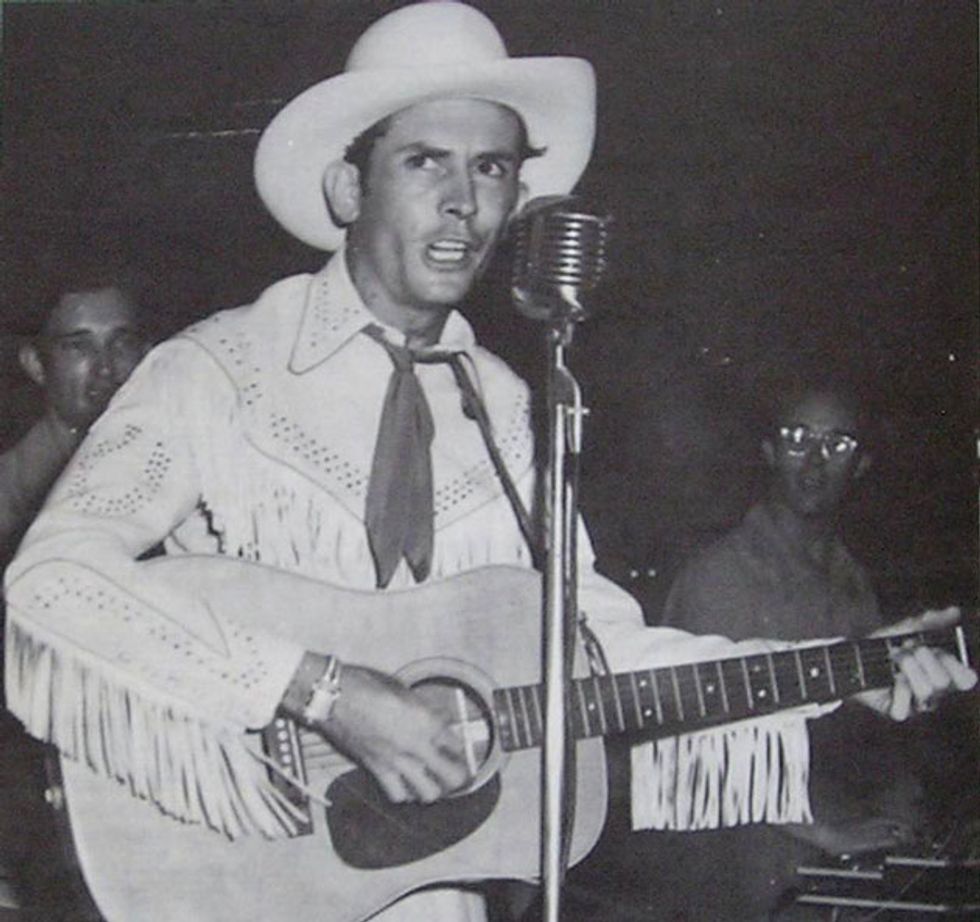

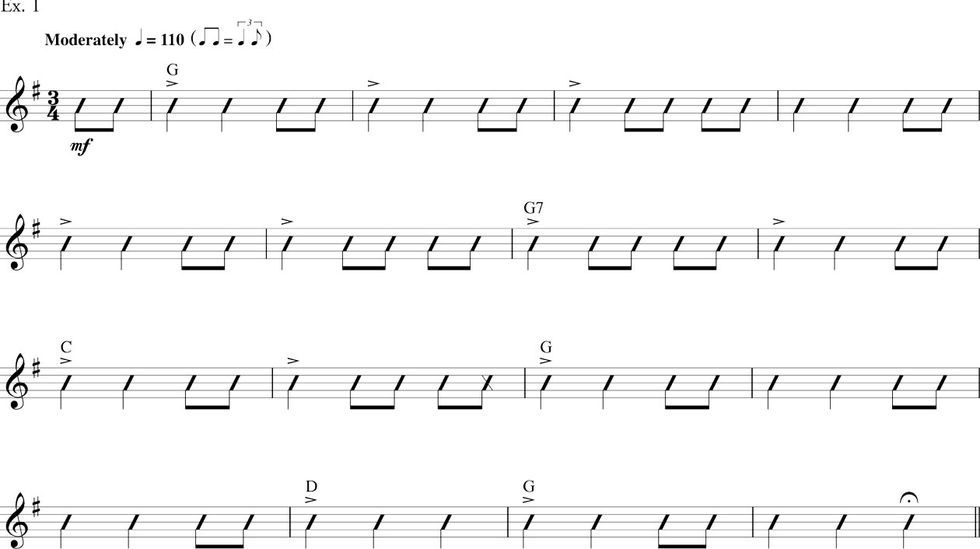
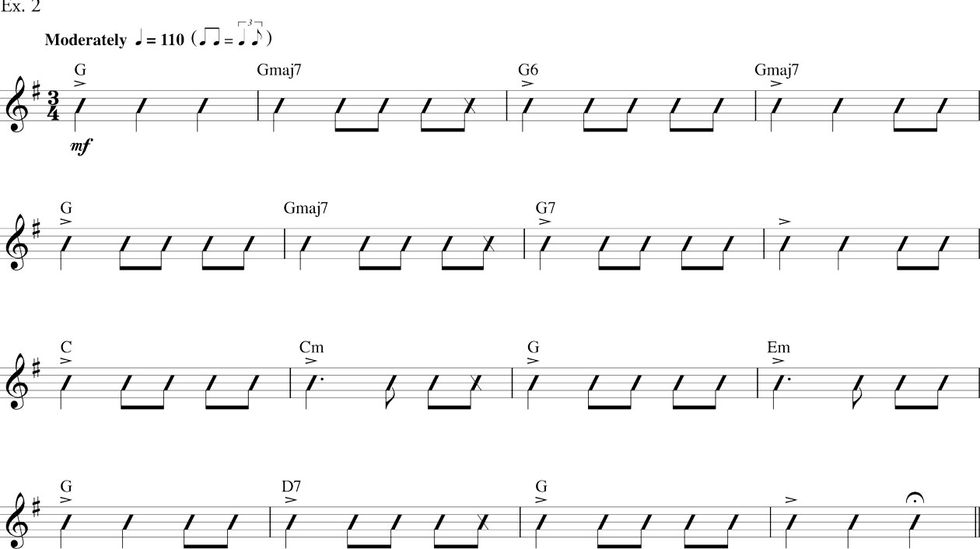
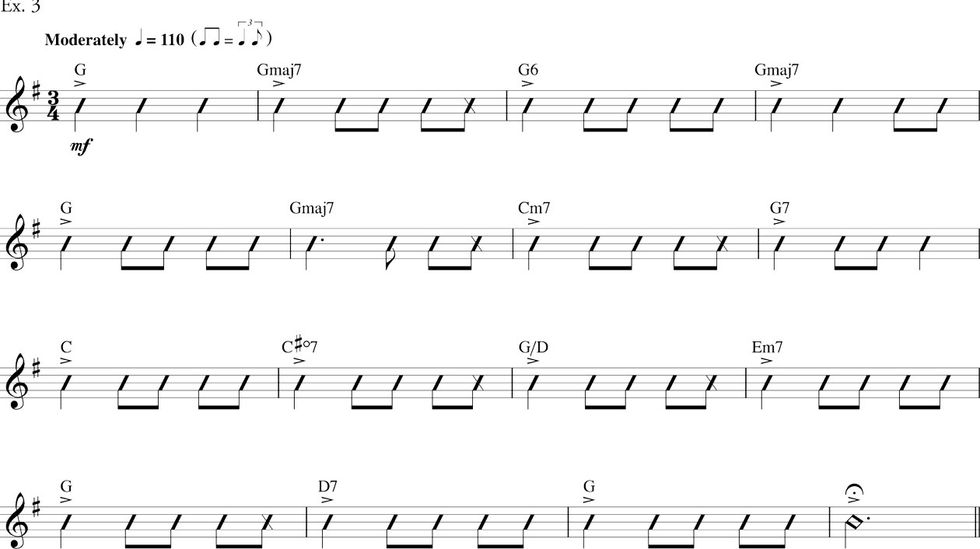
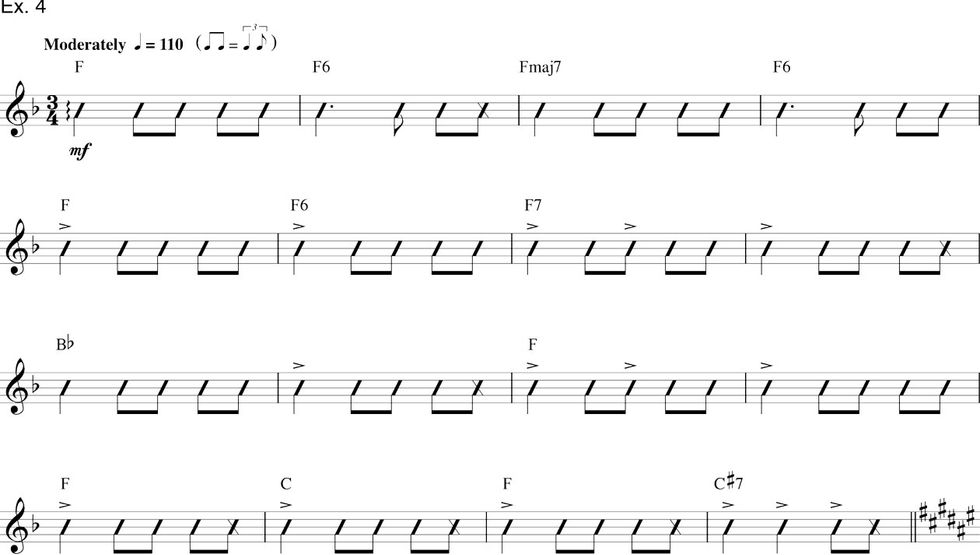
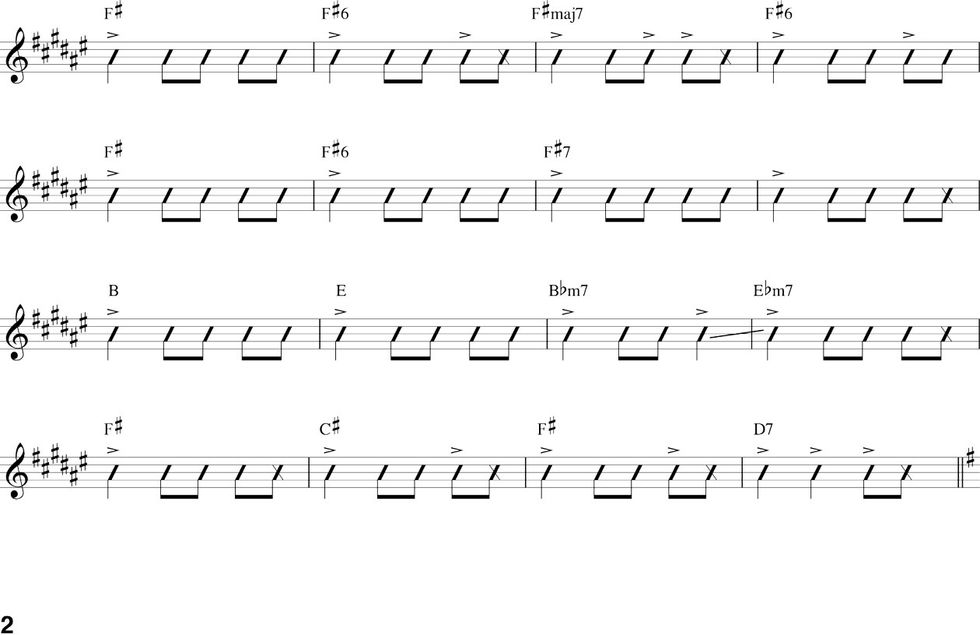
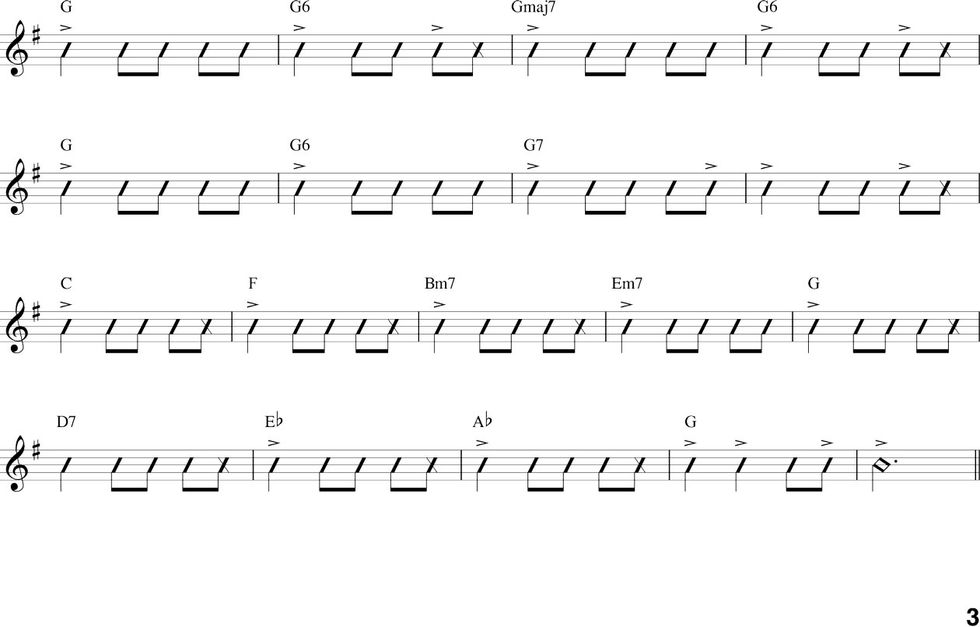
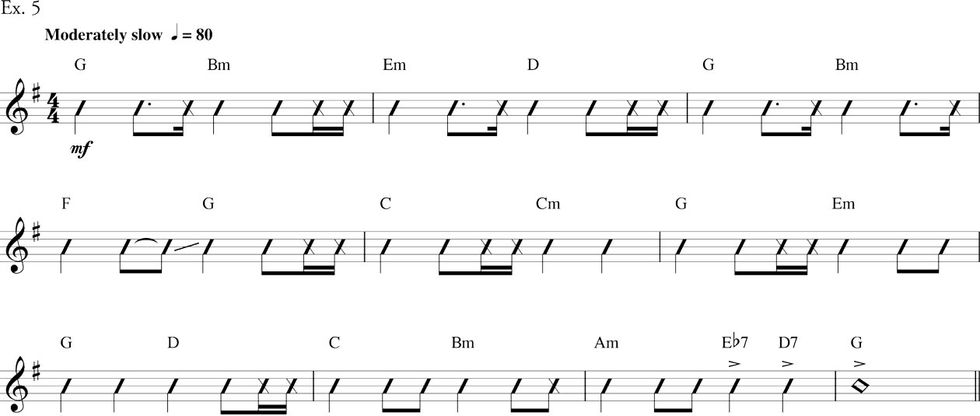










![Rig Rundown: Russian Circles’ Mike Sullivan [2025]](https://www.premierguitar.com/media-library/youtube.jpg?id=62303631&width=1245&height=700&quality=70&coordinates=0%2C0%2C0%2C0)












